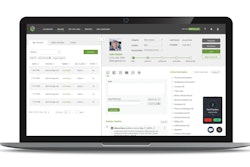Several of the country’s largest for-hire motor carriers saw their revenues and profits tumble in the first half of 2020 compared to the same time period a year ago, as the COVID-19 pandemic and corresponding shutdown orders ate into freight volumes and trucking rates.
However, several of these carriers that are publicly traded on the New York Stock Exchange and thus release public quarterly earnings reports, said freight volumes improved steadily into July. Of those, several also said they were anticipating a crimp in trucking capacity in the back half of the year, which would stand to boost rates as the supply chain adjusts to ongoing shockwaves.
“Although uncertainty remains, we have been positioning the company for a second half 2020 freight market with increased demand and constrained supply,” said Schneider CEO Mark Rourke in his company’s second quarter earnings report.
Knight-Swift, in its earnings report, said it anticipates a capacity reduction, too. “We believe supply has and will continue to exit the market as evidenced by significantly lower Class 8 truck orders, a weak used equipment market and lower transportation employment levels,” the report stated.
Though most major carriers that release earnings numbers reported declines in revenue and income, a few bucked the trend and reported increases in revenues and profits. Absent from the listings here, and usually included in these roundups, is Covenant Transportation (No. 35, CCJ Top 250), who in late July announced a delay in its earnings release.
—
Heartland Transportation
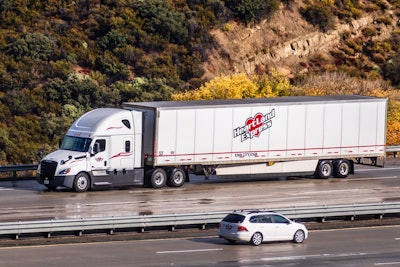
“From a market perspective, the quarter started off with weak freight demand in April and then strengthened each month during the quarter,” said Heartland CEO Mike Gerdin. “This trend has continued through the first two weeks of July. We believe Heartland Express is well positioned to navigate a volatile freight market, changing customer needs and relationships, and an uncertain economic landscape in the months ahead.”
Heartland (No. 49) was one carrier reporting year-over-year revenue gains from 2019. In the second quarter, revenues grew to $160.9 million, up from $142.1 million in 2019’s second quarter. Likewise, year-to-date through June, revenues climbed to $327.2 million, from $281.7 million in 2019’s first six months.
However, the fleet’s profits slipped slightly, due in part to accounting for equipment depreciation and other increased expenditures. The fleet reported incomes of $19.2 million in the second quarter, compared to $22.4 million a year ago, and $32.4 million year to date – down from $39.7 million through 2019’s first six months.
—
J.B. Hunt
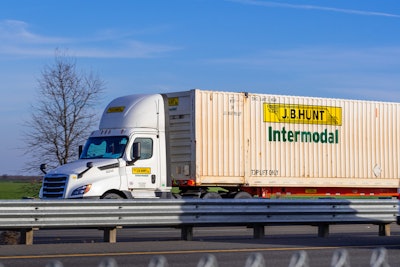
J.B. Hunt (No. 3) reported dips in revenue and income across the board. Year-to-date through June, revenues were down $100 million, to $4.43 billion, due entirely to a second quarter decline of $110 million compared to 2019’s second quarter. Income through 2020’s first six months fell to $226.5 million, from $253.2 million last year, with second quarter dips ($121.7 million vs. 2019’s $133.6 million) to blame.
From its earnings statement: “Lower revenue and higher purchased transportation costs, continued investment in technology across all segments, and employee and operating supplies costs related to COVID-19, were partially offset by benefits of lower driver turnover, decreased insurance and claims costs and significantly reduced travel and entertainment costs compared to the prior year.”
—
Knight-Swift Transportation

Knight-Swift (No. 4) reported a 14.6% slide in revenue in the second quarter alone compared to the same time period a year ago. The $180 million year-over-year decline in the quarter was part of an overall $280 million lag in revenue year-to-date compared to 2019. The conglomerate’s revenues through June were $2.19 billion, compared to $2.47 billion a year ago.
Likewise, year-to-date, the company’s income shrank to $145.6 million, down from $167.1 million in 2019’s first half.
“From a market perspective, freight demand in April was weak, but gradually strengthened throughout the quarter, and has remained strong thus far in July. We are encouraged by the continued strength in freight demand in July,” the fleet’s report stated. “However, demand may be difficult to predict for the back half of the year.”
—
Landstar Systems
Like the others, the all-owner-operator fleet Landstar (No. 8) was dealt a financial blow by the pandemic and sagging demand. It also reported spending $12.6 million on per-load bonuses in April and May as part of the fleets’ efforts to reward independent contractors for loads hauled during the worst of the downturn.
Its year-to-date revenue sank by $330 million, to $1.75 billion, including a dip of $220 million in the second quarter. Income year-to-date was cut nearly in half, falling to $65.1 million, compared to $124.4 million in 2019’s first six months.
—
Marten Transport
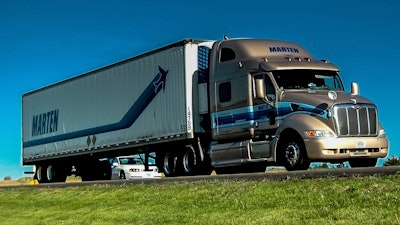
Marten was another outlier through the first half of 2020. The fleet’s revenue grew slightly in the second quarter, to $212.4 million, and was up some $20 million through the first half of the year, to $431 million. Year-to-date, income climbed by $3 million, to $31.9 million, with those gains coming in the second quarter.
—
Schneider National
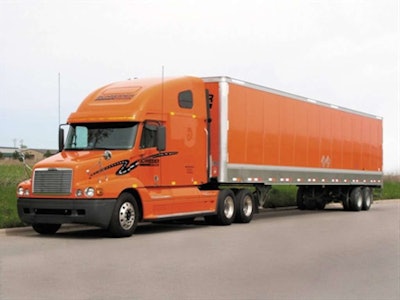
“Of our various segments, intermodal was most negatively impacted by the pandemic while the impact to truckload and logistics was proportionately less,” said Schneider CEO Mark Rourke. “Volumes improved as the quarter progressed, and our cost containment actions helped mitigate the earnings impact of the challenging market.”
The fleet, No. 7 in the CCJ Top 250, did see its revenue slip by $260 million through the first six months of the year compared to the same period in 2019. In the second quarter alone, year-over-year, revenues fell by $180 million. Its income followed suit, declining by 23% in the second quarter. Year-to-date through June, income fell 8%, to $89.6 million.
—
USA Truck
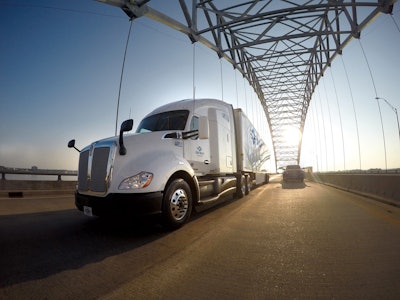
“The second quarter of 2020 was unlike any quarter we have seen in transportation, producing unprecedented day-to-day and week-to-week swings in freight and pricing due to the COVID-19 pandemic,” said USA Truck President and CEO James Reed.
USA Truck (No. 63), posted a loss of $3.5 million through 2020’s first six months, down from an income of $1.5 million through 2019’s first half. Its revenue fell by $10 million in the second quarter, to $123.7 million, and year-to-date revenue was down $17 million year-over-year, to $250.5 million.
—
U.S. Xpress
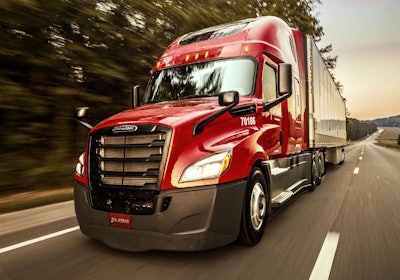
U.S. Xpress (No. 15) was another to buck the trend, posting year-over-year revenue and income gains in the second quarter. Likewise, year-to-date revenue climbed, too, compared to 2019, but income slipped.
“The company’s baseline assumptions for the balance of 2020 include a general sequential economic recovery that may be volatile nationally or by region at times, a muted increase of capacity, and a relatively benign cost inflation, which should allow for a more favorable rate environment over the next several quarters,” said Eric Fuller, U.S. Xpress’ president and CEO.
In the second quarter, Xpress’ revenue grew by $9 million, to $422.5 million, compared to 2019’s second quarter. Year-to-date, revenue was up $26 million year-over-year, to $855 million. Second quarter income jumped to $9.5 million, from $2.9 million in 2019, while year-to-date income fell to $2.3 million, compared to $10.1 million through 2019’s first half.
—
Werner Enterprises

Werner (No. 11) saw revenue slip by $60 million year-over-year through 2020’s first six months, to $1.16 billion, due almost entirely to the second quarter’s $58 million dip in revenue year over year. The fleet’s income slipped by $7 million, to $62.2 million, year-over-year through the first half of 2020.
From its earnings report: “In our dedicated fleet, freight demand remained strong in second quarter 2020. Approximately three-quarters of our dedicated revenues are with essential products customers, and their freight volumes were generally strong during second quarter 2020. A few dedicated customers were more significantly impacted by COVID-19 and had lower volumes. Our dedicated truck count temporarily declined by 150 trucks from first quarter 2020 to second quarter 2020 due to customers impacted by COVID-19, a lack of new business implementations in second quarter 2020 and lower driver availability. We expect dedicated new business implementations to begin to pick up in third quarter 2020 as businesses reopen.”





